
A Mind-Blowing Impossible Shot from the Movie ‘Contact’
This has to do with filmmaking rather than photography, but check out this jaw-dropping shot from the 1997 movie …

This has to do with filmmaking rather than photography, but check out this jaw-dropping shot from the 1997 movie …

Livestreaming events on YouTube is becoming commonplace, but besides the experience of being there, the one thing that livestreams don't provide is a way to take pictures and remember the event. When you're there you're taking video or snapping a shot, when you're on your couch you're watching video and, at best, grabbing a few screenshots -- not the most effective method.
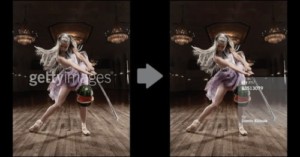
Wanting to shed its image of being "old media" and "old fashioned", Getty Images has unveiled a new watermark that does away with the annoying logo in favor of short links. Rather than plaster the words "Getty Images" across the front of photos, the new watermark is actually useful: it provides a short link that directs viewers to the webpage for that particular image and also gives credit to the creator of the work. Inspired by the plaques found at exhibitions, the new watermark is offset to the side rather than smack dab in the middle.

Last Thursday, 13-year-old Addison Logan of Wichita, Kansas found something really cool at a garage sale: an old Polaroid camera for only $1 (score!). But when Addison got it home and started looking up how to use it on the internet, what he found in the cartridge was even cooler, or maybe creepier. Inside the Polaroid camera, bought from a family they don't even know, was a picture of his uncle Scott who died some 23 years ago in a car accident:

Ken Burns is a documentary legend, and even though he comes from a filmmaking perspective, his ideas on what makes a story worth telling (or, in our case, a moment worth capturing) are universal and universally inspiring.
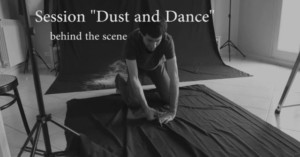
As behind-the-scenes videos go, this one is pretty short, but it still offers an interesting look at how photographer …

If you've been using smartphones for any length of time you've probably heard of Bump, the app that allows you to transfer photos and contact information between two phones with a simple... well... bump. And now they've expanded their functionality to include a website/webapp that makes transferring photos from your phone to your computer a breeze.

For those of you who use your Sony NEX-5N to shoot video, you may have noticed that longer clips …
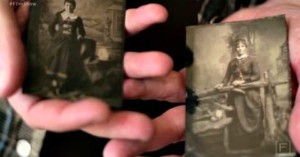
In Episode 1 of the Framed Network series Film, hosts and photographers Tanja …

The ability to connect your camera to your smartphone wirelessly is starting to really gather some steam. Unfortunately, up until now, that technology usually required a WiFi connection and an adapter that often cost some serious dinero. But if all you're looking to do is share the photos you take instantly sans WiFi network, you don't have many options. Enter CloudPic Mobile.
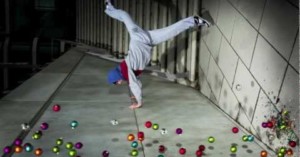
When Hamburg, Germany-based photographer Florian Bison first saw a video of parkour, he …

After discovering that multiple websites had used one of his photos without permission, photographer Jay Lee began sending out DMCA takedown notifications to web hosts in an attempt to protect his copyright. One of the websites was owned by a woman named Candice Schwager, who had 14 of her sites temporarily taken offline as a result of the takedown request. Turns out Schwager is involved in both helping represent special needs children and helping a man named Louis Guthrie get elected as County Sheriff. This is where the story gets weird.

If you think 14fps on a high end DSLR is fast, check out this video by Mike's Electric Stuff. In it, he does an extreme teardown of a cheap Panasonic Lumix compact camera and spends 30 minutes exploring and explaining the various components.

Hovering somewhere between "novel idea" and "pointlessly stupid," InstaCRT is a new iOS app that bills itself as "the world's first real camera filter." Photographs processed through the app are given a CRT monitor look that doesn't involve any digital fakery. Instead, your photo is actually sent to the creators' machine located in Stockholm, Sweden, where it's displayed on a tiny CRT monitor and then photographed by a DSLR. The new photo is then beamed back to your phone in less than a minute.

Since November 2011 I’d been thinking about an astrophotography project: take a photo of the moon each day from full moon to full moon, then combine it into a seamless movie that looks as if someone had moved the sun around the moon for one minute. I found similar videos, but most were simulations done in software, or photographic ones that weren’t very smooth. Seemed simple enough, mostly because I didn’t see the complications that would come along with this project caused by... physics.
My plan involved setting the same exposure each night starting with the full moon, and let the moon’s dark side gradually move across its face while the lit side stayed about the same brightness. Adjust the photos’ angles to match each other, throw all of them into Final Cut Pro X and add cross dissolve transitions between them, and I’d get a smooth movie showing every phase of the moon.
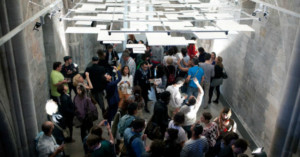
For her most recent exhibition, Brooklyn-based Dutch photographer Anouk Kruithof wanted to do something revolutionary, to change the way we experience the typical art exhibit -- thus was born her exhibit "Untitled: I've Taken Too Many Photos, I've Never Taken Any Photos."

It's strange to think that cartography laws could somehow affect the functionality of your camera overseas, but a recent article on Ogle Earth points out that just such a thing has been going on with GPS-enabled cameras as far back as 2010. The whole "investigation" into the matter began with the release of the Panasonic TS4 earlier this year. For some reason the press release cautioned that the GPS in the camera "may not work in China or in the border regions of countries neighboring China."
But after doing some digging they discovered that these restrictions are not limited to the TS4, nor are they even limited to Panasonic. In fact, many major manufacturers go to great lengths to conceal or toss away the location data captured by GPS-enabled cameras when you're taking photos in the People's Republic of China.

It happens every time you press the shutter. Tiny circuits spring into action and furiously record the information from every sensor pixel onto your memory card. But pixel information is not all that is recorded. With every shutter press, your camera records dozens of interesting details about how the photo was taken. These details are tucked away deep inside the labyrinth of code that comprises your photo file. Photo editing softwares, such as Photoshop or Lightroom, can unlock some of this data for viewing later. But they normally only scratch the surface of the available information by displaying only the most commonly used Exif tags.
To mine the deepest depths of your Exif data, you may want to try a utility called Exiftool. This utility is known for its ability to squeeze every last drop of information from your Exif data. Don’t expect a slick, graphical interface, though. Although there are more user friendly softwares which incorporate the Exiftool engine, we’re going to demonstrate Exiftool where it is at its minimalist best – at the command line.
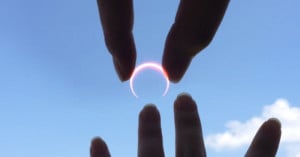
This amazing image has been going viral on the Internet, usually accompanied with the caption: A man in Japan …
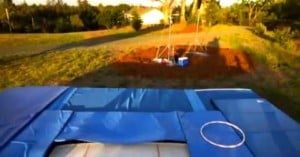
Yesterday we shared some new sample photos published by Google showing what its …
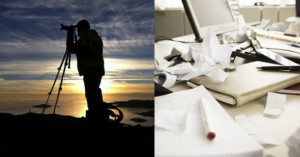
I try to stay involved as much as I can with students studying photography at different institutions in the area. Every year I go back to RIT and do a lecture on the business of photography and I feel it's important that I do so.
Recently I got an email from a young photographer asking me about the career of being a still life/food photographer.
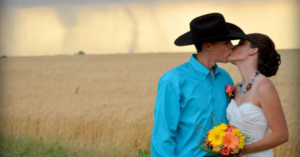
Caleb and Candra Pence had a couple unexpected guests crash their wedding in Kansas last Saturday: tornadoes! The two twisters touched down roughly 10 miles away during the ceremony but -- luckily for everyone involved -- were not moving. Wedding photographer Cate Eighmey took advantage of the rare situation by having the newlyweds pose with the twisters in the background. The resulting photographs have taken the Internet by storm (haha, get it?), and the Pences have spent their honeymoon in Wyoming handling calls from the media.
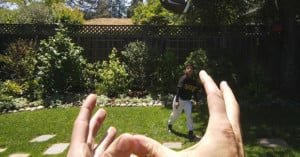
Google Glass team member Max Braun took to the stage at the Google+ Photography Conference yesterday to show off a prototype device, talk about the project's potential impact in photography, and show off some new sample photographs.

Using keyboard shortcuts while editing your photos can save you loads of time, and cheat sheets are a good …
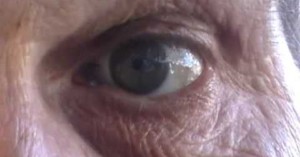
Here’s an interesting video in which street photographer John Free shares a system …

When it comes to photography agencies, Getty Images reigns supreme. Founded in 1995 by Mark Getty and Jonathan Klein, the Seattle-based behemoth in many ways took stock and editorial photography into the digital age, causing the slow decline of "former-rulers" like the AP. Between Getty's editorial supremacy and the rise of an era where photojournalists find themselves replaced sometimes by average Joe's with smartphones, the last few years have consisted mostly of the AP trying to staunch the bleeding. But now it seems they're ready to fight back.

Feast your eyes on this amazing stop motion music video idea for the song “Rivers and Homes” by electronic …
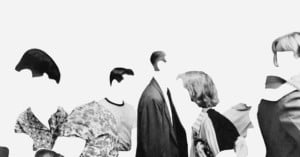
Many consider Robert Frank's classic photobook "The Americans" (originally published in France as "Les Américains") to be one of the greatest photobooks of all time. Knowing this, Mishka Henner should have probably thought twice before using it as the subject of one of his forays into digital appropriation and, in this case, erasure.
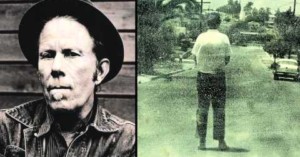
If you’ve never really understood conceptual art, the video above will only serve …
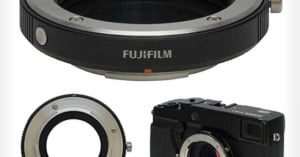
There are already options available for those people who want to use Leica …

The Portrait Project is a series of 10 stitched portraits by London-based artist Evelin Kasikov. Each portrait is created with an actual Polaroid picture as the starting point, and is based on the same grid. The idea is similar to pointillism, but instead of dots she uses squares, crosses, and lines of different colors and weights. 10-15 feet of cotton thread does into each piece, and stitching them takes between two days and a week to complete.
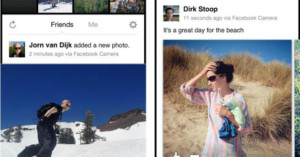
Huge news came out of the Facebook universe today with little to no warning: Facebook has launched its own camera app. Seemingly out of nowhere, the social networking giant has launched its own "Facebook Camera" camera app that, of course, connects directly to your Facebook account, making it that much easier to take, upload, tag, and comment on your photos.
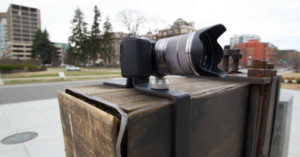
Tripods are great, even necessary for a lot of photographic situations, but one thing they are not is pocket-sized. Amateur photographers especially will often find themselves within reach of their camera, but too far from their tripods; and if you're just a photography enthusiast who likes to snap photos just about everywhere you go, forget carting around a tripod. That's the dilema Matthew Baty found himself in, and so he developed the Statc, an ultra-portable magnetic tripod head that you can stick to just about any metal surface.

At first glance, photographer Timothy Pakron's "Silver Print" series of portraits might look like ink paintings or some kind of CG art. They're actually photographs created by hand painting developer onto photo paper in the darkroom instead of immersing the paper entirely in the solution.

Not many wedding photographers get to shoot a wedding portrait that receives over one million Facebook likes, and not many more go to a wedding expecting to shoot a graduation party. But that's the story of photographers Noah Kalina and Allyson Magda, and their experience shooting Mark Zuckerberg and Pricilla Chan's secret wedding.
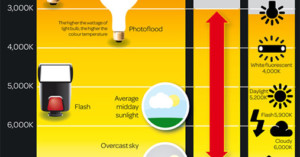
Digital Camera World magazine created this handy free infographic showing the color temperature …
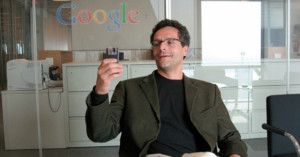
Over the last couple of days Google has been hosting the "Hangout In Real Life" Google+ Photographers Conference in San Francisco, and if anything has come out of the conference at all, it's that Google is intent on making Google+ the photo sharing service of the future.
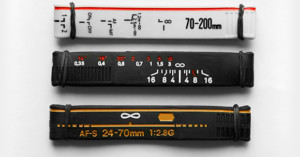
Back in 2010, San Diego-based photographer Adam Elmakias launched a geeky fashionable line of gel bracelets based on various lenses. The Lens Bracelets took the web by storm, and now Elmakias is back with a new and improved "pro series" lineup of bracelets that are much more faithful representations of actual lenses by Canon, Nikon, Leica, and Zeiss. The new bracelets are based off $25K+ worth of popular cameras lenses, and are more detailed and more durable than the previous version.

Jack Robinson was a quiet man who mostly kept to himself, which explains why it was his boss, Dan Oppenheimer, who was left to take care of his estate when he passed. Little did Oppenheimer realize, however, that when he opened the closet in Jack Robinson's incredibly tidy apartment, he would find a collection of pristine portraits of celebrities that Robinson shot in his early days as a commercial photographer for Vogue.